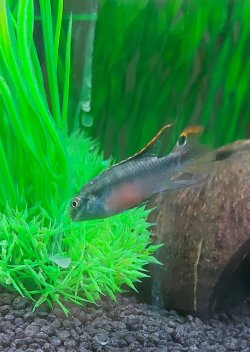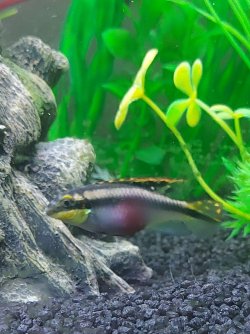Hi everyone this is my first post..
I have 2 kribensis a male and female the female keeps doing the S shape thing and vibrations and the male is doing the vibrations aswell but when the female gose in one of the caves the male never goes in and if he is in there and the female comes in he goes flying out.. Do you think they will breed or should I switch the male cuz the female is definitely eager to breed?
I have 2 kribensis a male and female the female keeps doing the S shape thing and vibrations and the male is doing the vibrations aswell but when the female gose in one of the caves the male never goes in and if he is in there and the female comes in he goes flying out.. Do you think they will breed or should I switch the male cuz the female is definitely eager to breed?




